Laurita Marconi Schiavon, Myrian Nunomura
Editorial
Maja Pajek
INDIVIDUAL APPARATUS RESULTS OF FEMALE ALL AROUND OLYMPIC CHAMPIONS
Ivan Čuk, Karmen Šibanc
HOW SUCCESSFUL ARE MEN ALL-AROUND OLYMPIC MEDALISTS ON APPARATUS EVENTS AT OLYMPIC GAMES FROM 1924 TO 2016
Ivana Montandon Aleixio, Myrian Nunomura
AGE PERCEPTION AND SPORTS CAREER IN THE WOMEN\'S ARTISTIC GYMNASTICS
William A Sands, Steven R Murray, Jeni R McNeal, Cindy Slater, Michael H Stone
HISTORICAL CHANGES IN HEIGHT, MASS AND AGE OF USA WOMEN’S OLYMPIC GYMNASTICS TEAM: AN UPDATE
Flavio Bessi and Jan Pfeifer
ROTATION SCHEMES OF THE BEST FEMALE GYMNASTS IN THE WORLD
Catarina Leandro
APPARATUS DIFFICULTY IN RHYTHMIC GYMNASTICS ROUTINES – COMPARISON BETWEEN 2 OLYMPIC CYCLES
Eliana Toledo, Mateus Oliveira, Maria Letícia Scarabelim, Bianca Assumpção
THE IMPACT OF THE CHANGE IN THE MUSICAL ATTRIBUTES OF THE CODE OF POINTS (2013-2016) ON THE ROUTINES IN RHYTHMIC GYMNASTICS OF THE RIO 2016 OLYMPIC GAMES
Laurita Marconi Schiavon, Bruna Locci
BRAZILIAN OLYMPIC GYMNASTS’ PERSPECTIVES ON THEIR PARTICIPATION IN THE OLYMPIC GAMES
Caroline Inácio Molinari, Vitor Ricci Costa, Kamau Osei Fregonesi Ferreira Monteiro, Myrian Nunomura
CRITICAL ANALYSIS OF THE PERFORMANCE OF WOMEN\'S ARTISTIC GYMNASTICS IN BRAZIL IN THE 2004-2016 OLYMPIC CYCLES
Marco Bortoleto, Paulo Carrara, Murilo Guarniei Roveri
TRAMPOLINE GYMNASTICS: THE BRAZILIAN PARTICIPATION AT INTERNATIONAL CHAMPIONSHIPS – THE OLYMPIC GAMES STILL A DREAM
William Sands, Olyvia Donti
DO WOMEN’S TEAM MEMBERS COMBINED CAREER DURATIONS IN THE OLYMPIC GAMES AND WORLD CHAMPIONSHIPS INFLUENCE TEAM OUTCOMES? A HISTORICAL EXAMINATION – 1936 TO 2016
Sunčica Delaš Kalinski, Petra Mandić Jelaska, Almir Atiković
RELATIVE AGE EFFECT AMONG OLYMPIAN GYMNASTS
Anton Gajdoš
Short Historical Notes XIII
Laurita Marconi Schiavon, Myrian Nunomura
Editorial
GYMNASTICS AT OLYMPIC GAMES
In 2018, The Science of Gymnastics Journal has reached the first decade of existence! We must celebrate, as it is among the few scientific journals specific to one sport!
We applaud its 10th anniversary with this special issue for October: Gymnastics at Olympic Games.
Rio 2016 has gone, with many memories to recall, the exuberance performance of Simone Biles and Kohei Uchimura in women’s and men’s Artistic Gymnastics; Margarita Mamun in Rhythmic Gymnastics; and Uladzislau Hancharou and Rosanna Maclennan in women’s and men’s Trampoline. They were crowned absolute queens and kings, although there are many others who exhibited their best too. Gymnastics has been growing and evolving at each Olympic Cycle, new skills and combinations abound, and gymnasts seem to have no limits! However, this evolutionary trend in Gymnastics is partly owed to the science, and the gymnastics’ community knows well gymnasts could not reach that far without the support of science. This special edition adds 12 articles to the science of gymnastics from researchers of Brazil, Bosnia and Herzegovina, Croatia, Germany, Portugal, Slovenia and the United States of America, who cover a variety of topics.
Maja Pajek discusses the influence of rules’ changes on the trend of higher difficulties and gymnasts’ specialization in Artistic Gymnastics, while investigating the performance of all-around medalists at individual apparatus finals.
Ivan Čuk and Karmen Šibanc present the history of the development of Olympic Games all-around medallists and their success in reaching the podium on individual apparatus in Men’s Artistic Gymnastics.
Ivana Montandon and Myrian Nunomura explored the experiences of older gymnasts (over 20 years of age) and the factors that contributed to the prolongation of their sports career in the high level of Women’s Artistic Gymnastics in Portugal.
William Sands, Steven Murray, Jeni McNeal, Cindy Slater, and Michael Stone conducted an extended and updated analysis of the sizes trends of U.S. female Olympic artistic gymnasts including the 2012 and 2016 Olympic Games.
Flavio Bessi and Jan Pfeifer attempt to set a viable classification system to categorize the rotation habits of high-level artistic gymnasts in the Women’s Individual All Around finalists at the Olympic Games Rio 2016.
Catarina Leandro analyzed the evolution of the apparatus difficulty in the Rhythmic Gymnastics in two Olympic cycles, as an attempt to identify eventual factors that could contribute to the improvement of performance in competition.
Eliana Toledo, Mateus Oliveira, Maria Letícia Scarabelim and Bianca Assumpção analyzed the impact of the Rhythmic Gymnastics Code of Points (2013-2016) by allowing vocal music in routines, at the Rio 2016 Olympic Games.
Laurita Schiavon and Bruna Locci analyzed the perspectives of Brazilian gymnasts on the experience of participating in the Olympic Games in the Women’s Artistic Gymnastics competition (1980-2004), using oral history in a qualitative research approach.
Caroline Molinari, Vitor Costa, Kamau Monteiro and Myrian Nunomura analyzed the Brazilian Women’s Artistic Gymnastics team participation over the last four cycles (2004-2016) in order to identify and discuss the factors associated to the results and contributions to the development of this sport in the country.
Marco Bortoleto, Paulo Carrara and Murilo Roveri analyzed the participation of the Brazilian trampoline gymnastics in the main international events as the World Championships and the Olympic Games.
William Sands and Olyvia Donti characterized and analyzed the durations of careers of U.S. elite female gymnasts who had qualified for Olympic Games and World Championships teams and compare these with the team rank from 1936 to 2016.
Sunčica Delaš Kalinski, Petra Mandić Jelaska and Almir Atiković examined the relative age effect (RAE) among Women’s and Men’s Artistic Gymnastics in the elite international gymnasts who competed at Olympic Games.
After hosting the Olympic Games in our country (Brazil), we are very pleased as guest editors for this special issue. It was a unique opportunity to work with researchers from different countries and fields of study, and to realize how science can support the many gaps still to fulfil in the world of gymnastics. Articles also incited our reflection and foster much thought.
We hope you will enjoy every article presented as we did.
Maja Pajek
INDIVIDUAL APPARATUS RESULTS OF FEMALE ALL AROUND OLYMPIC CHAMPIONS
the changes of Code of Points stimulate the rise in exercise difficulty and a drive towards increased specialization of gymnasts. We inspected the performance of all-around medalists at individual apparatus finals to analyze the trends in their efficiency to reach the podium. Data from Olympic games 1952-2016 was included in this retrospective study. In the period form 1952-1984 there were 5 occasions when all-round winners reached 75 to 100% efficiency in reaching the podium at all individual apparatus finals. However overall, there is a clear trend of diminished efficiency of all-around winners to reach the podium at individual finals in the observed period (1952-2016) from the average of 7.7 medals in the first three observed events to 4.3 medals at the last three observed events. Olympic all-around champion efficiency was calculated from sum of all medals won by all-around champions on apparatuses divided by 4. This efficiency has decreased from 91.7% in the first three events to 41.7% in the last three events. In recent events all-around champions still managed to win at least one medal on single apparatuses as there was only one exception to this rule at 2012. It is very much probable that in the future all-around champions will excel further at single apparatus finals; however a huge predominance of all-around champions at apparatus finals cannot be expected any more.
Key words: history, artistic gymnastics, development
Ivan Čuk, Karmen Šibanc
HOW SUCCESSFUL ARE MEN ALL-AROUND OLYMPIC MEDALISTS ON APPARATUS EVENTS AT OLYMPIC GAMES FROM 1924 TO 2016
At Olympic Games (OG) 1896 in Athens all-around competition in gymnastics was not a discipline. First time all-around title in gymnastics at OG was awarded in Paris in the year of 1900, however there were no apparatus awards given until OG 1924 in Paris. The article shows a historical research and follows development of OG all-around medallists and their success with relation to winning medals on individual apparatus. In Paris1924 Leon Štukelj (Slovenia, ex-Yugoslavia) won all-around and horizontal bar gold medal. Since then all-around medallists shared very different success in apparatus ranking. The last multiple winner was Vitaly Scherbo (Belarus, ex-Soviet Union) who at OG 1992 won all-around and three apparatus finals (rings, vault and parallel bars). Since then such achievement has not been repeated yet. With open-ended difficulty value in the Code of Points and special competitions held by FIG for apparatus specialist, the doors are opening to more apparatus specialists to attend OG and chances to repeat Scherbo’s success are getting smaller
Key words: history, men artistic gymnastics, Olympic Games, medallists
Ivana Montandon Aleixio, Myrian Nunomura
AGE PERCEPTION AND SPORTS CAREER IN THE WOMEN\'S ARTISTIC GYMNASTICS
Women's Artistic Gymnastics (WAG) is an Olympic sport that has produced young girls celebrities over time, which has been extensively criticized for producing "little pixies." The present research was generated by the project "Coming of age: Towards best practice in Women's Artistic Gymnastics" (Kerr, Barker-Ruchti, Schubring, Cervin, Nunomura, 2015), whose focus was to analyze the experiences of older gymnasts and the factors that contributed to the prolongation of their career. The participants of this study were former gymnasts and are still active in Portugal, at the high level. We conducted a semi-structured interview to collect participants' reports and the thematic analysis was used as data treatment. The perception of becoming physically older was the most difficult fact to manage among the majority of respondents. The experience of being "older" gymnasts has helped them to understanding how particular contexts happen and thus face the challenges of the new phase of their careers. The factors that influence the development of the career have been to soften the myth that mature women would not compete internationally in the WAG; to propose alternatives for training in order to preserve the general health of gymnasts; propose guidelines for the management of the sports career. In short, we bring about future research into what could be done, which should not be done; or what should be avoided, by coaches, gymnasts and stakeholders in general to further the career of WAG gymnasts.
Key words: Women’s artistic gymnastic, body; extended career
William A Sands, Steven R Murray, Jeni R McNeal, Cindy Slater, Michael H Stone
HISTORICAL CHANGES IN HEIGHT, MASS AND AGE OF USA WOMEN’S OLYMPIC GYMNASTICS TEAM: AN UPDATE
Nearly every modern Olympic Games has brought astonished comments and criticism of the body sizes of female gymnasts. The comments from laypersons, scientists, journalists, and physicians too often imply that these diminutive athletes are unusually small and possibly unhealthy. Purpose: An extended and updated analysis of the sizes of U.S. female Olympic gymnasts including the 2012 and 2016 Olympic Games. Methods: Official public records from the US Olympic Committee and USA Gymnastics of Olympic team members were assessed including height, mass, age, body-mass index (BMI) and team performance rankings. Sixteen Olympic teams with a total of 123 team positions including the alternates were assessed. Trend analyses were conducted using linear and polynomial models. Results: Analyses indicated that since 1956, height, mass, age, and BMI declined at first and then increased, with the exceptions of height and rank. Best regression fits were obtained via 2nd order polynomial equations. Height and rank showed a downward trend throughout the historical period. Conclusion: Female Olympic gymnasts were getting smaller through approximately the 1980s and early 1990s. An upward trend in size variables was then observed through 2008. The addition of the 2012 and 2016 Olympic Games data showed that height shifted to a decline from a slight upward trend, and rank continued to decline throughout the historical period.
Key words: trends, anthropometry, gymnastics, body size
Flavio Bessi and Jan Pfeifer
ROTATION SCHEMES OF THE BEST FEMALE GYMNASTS IN THE WORLD
Worldwide trainers ask if there is a rotation scheme, which improves the gymnastics performance and/or facilitates the learning of the elements with longitudinal rotations. Although there are some surveys and scientific publications on it, we still are seeking for more data to understand the undergoing relationships within the rotation habits of high-level gymnasts. In a recent study, the Men’s Individual All‐Around finalists at the Olympic Games Rio 2016 were categorized using the current classification system of rotational schemes. This study aims first to categorize the Women’s Individual All‐Around finalists at the Olympic Games Rio 2016. Furthermore; the analysis should help to improve the classification system by comparing both genders. We assume that the female rotation scheme should be more complicated due to the requirements of choreographic movements and gymnastic turns. In this context, the study aims to set a viable classification system for female gymnasts as well. The study revealed that 52% of the female finalists turn to the right while 48% prefer to rotate to the left after having crossed out the dance and gymnastic elements.
Key words: laterality, rotational preference, rotation scheme, lateral consistency
Catarina Leandro
APPARATUS DIFFICULTY IN RHYTHMIC GYMNASTICS ROUTINES – COMPARISON BETWEEN 2 OLYMPIC CYCLES
The aim of this study was to analyze the evolution of the apparatus difficulty in Rhythmic Gymnastics gymnasts in 2 Olympic cycles and identify eventual factors that could contribute to improve the performance quality in competition. We studied the value of the apparatus difficulty in the gymnasts (potentially the gymnasts could participate in the Olympic Games) of the first World Championships of each cycle (2012/2016 e 2016/2020). This analysis focused on the technical value of the apparatus difficulty performed by the gymnasts in a total of 288 competition routines in the World Championships 2013, and 200 competition routines in the World Championships 2017. The data was treated using the descriptive statistics and after checking the normality of the data distribution using the Kolmogorov-Smirnov test we used a t-test to determine whether there were significant differences between the World Championships. Results showed an increasing appreciation of the apparatus difficulty in the final score of the gymnasts. The apparatus difficulty elements were significantly increased from one cycle to the other, mainly due to the increase of the Mastery value. There’s a greater balance in the use of different elements, giving privilege to the apparatus technique. The increase on the value of the apparatus difficulty in the RG competition routines will contribute for the quality and diversity of the RG competition in the Olympic Games.
Key words: Rhythmic Gymnastics, Apparatus difficulty, Evaluation, Competition performance.
Eliana Toledo, Mateus Oliveira, Maria Letícia Scarabelim, Bianca Assumpção
THE IMPACT OF THE CHANGE IN THE MUSICAL ATTRIBUTES OF THE CODE OF POINTS (2013-2016) ON THE ROUTINES IN RHYTHMIC GYMNASTICS OF THE RIO 2016 OLYMPIC GAMES
The Rhythmic Gymnastics Code of Points, 2013-2016, was a milestone by allowing vocal music in routines. This study aimed to analyze the impact of this change in the routines, at the RIO 2016 Olympic Games. This is a documentary research, with two types of sources: official International Federation of Gymnastics; and videos of the routines. The sample was composed of 26 individual athletes and 14 teams. The analysis was quantitative (incidence parameter) and qualitative (type of music). As a result, we identified that, of the 104 songs of individual routines, 81 were instrumental music (IM) and 23 represented music with voice and words (MVW). Among the IM, 21 were North-American (NA) and 60 from other nationalities (ON). Of the MVW, 11 were NA and 12, from ON. In team routines, of the 28 songs, 17 were IM and 11 were MVW. Of the IM, 6 were NA and 11, from ON. Among the MVW, 6 were NA and 5, from ON. We conclude that most of the gymnasts and teams used this new rule of the Code of Points. This change was effectively incorporated into world prominence delegations, and we verified the strong influence of NA music.
Key words: Rhythmic Gymnastics, Olympic Games, Code of Points, North-American Music.
Laurita Marconi Schiavon, Bruna Locci
BRAZILIAN OLYMPIC GYMNASTS’ PERSPECTIVES ON THEIR PARTICIPATION IN THE OLYMPIC GAMES
This paper analyzes the perspectives of Brazilian gymnasts on the experience of participatingin the Olympic Games (OG) in the Women’s Artistic Gymnastics (WAG) competition (1980-2004), using oral history in a qualitative research approach, and cross-sectional thematic analysis. The author interviewed ten Brazilian WAG gymnasts (100% of the sample) who participated in OG until 2004. The gymnasts’ testimonials indicated that, as the Brazilian WAG team improved their performance in international competitions, gymnasts’ expectations have changed over time, although the dream to participate in the OG was shared by all of them. From the generation of the pioneering gymnasts (1984-1988-1992) to the transitional generation (1996-2000), it is possible to observe several differences related to the pressure to perform well in the competition. While the pioneering gymnasts were not concerned about their ranking in the OG, the transitional gymnasts were reminded of the responsibility to represent their country. For the new generation gymnasts (2004), the participation in the OG carried the burden of needing to accomplish something, to be among the best gymnasts in the world, with actual chances of going to the finals and getting medals in the apparatus finals. Testimonials show their confidence in the work developed by the experienced Ukrainian coaches who led the Brazilian team in the OG in Athens. Gymnasts describe their experience in the OG as having accomplished a mission, feeling at the same time relief, disappointment, desire to return to other editions and some even report the sensation of being lost after returning to Brazil.
Key words: Women artistic gymnastics, history, Olympic Games
Caroline Inácio Molinari, Vitor Ricci Costa, Kamau Osei Fregonesi Ferreira Monteiro, Myrian Nunomura
CRITICAL ANALYSIS OF THE PERFORMANCE OF WOMEN\'S ARTISTIC GYMNASTICS IN BRAZIL IN THE 2004-2016 OLYMPIC CYCLES
Women’s Artistic Gymnastics (WAG) in Brazil has been represented in the Olympic Games since 1980; however, a full team was classified only in 2004. Analyzing the Brazilian team’s participation over the last four cycles (2004-2016), we have identified several factors that implied in the WAG results. In this study, we discussed these factors and reflected on their contributions to the development of the gymnastics. The milestone of the 2001-2004 Olympic cycle is marked by the first participation of a full team, when foreign coaches came to lead WAG, the training system was reorganized, and the selected athletes began training in a centralized training system in Curitiba’s Training Center. The 2005-2008 Olympic cycle was more successful, as a consequence of the long-term planning. In the 2009-2012 Olympic cycle, the Brazilian WAG went through a period of turbulence, the training was no longer centralized, and the head coach of the Brazilian team returned to his home country. In the 2013-2016 Olympic cycle, with the headquarters of the 2016 Olympic Games in the city of Rio de Janeiro, the Brazilian Olympic Committee devised strategies to boost the country’s success, which again drove improvement in the team results. We concluded that the last Olympic cycles represented a major advance in Brazilian WAG. Restructuring since 2000 has been paramount condition for the gymnastics discipline to reach the current level. The improvement in training and competition conditions, the structuring of a Training Center of excellence, and the multidisciplinary team support was essential for the preparation of Brazilian team in the Olympic Games.
Key words: Olympic Games; Long-term planning; International Acknowledgement
Marco Bortoleto, Paulo Carrara, Murilo Guarniei Roveri
TRAMPOLINE GYMNASTICS: THE BRAZILIAN PARTICIPATION AT INTERNATIONAL CHAMPIONSHIPS – THE OLYMPIC GAMES STILL A DREAM
Since the modern trampoline was built by George Nissen and Larry Griswold around, 1934 in USA, this equipment and its use has suffered drastic changes. Its development was decisive in order to Trampoline Gymnastics to be included at the Olympic Games program in 2000. In Brazil its practice started in the 1980’s, and has been only integrated the Brazilian Gymnastics Federation in 1999. The purpose of the study is to analyze the Brazilian participation in the international trampoline gymnastics championships. Data collection was performed by the documental and bibliographic research of main international trampoline gymnastics competitions. The results show that, even though Brazil is the leader in South America with relevant participation in the continental level, the first participation at an Olympic Games had only been possible in 2016, because Brazil was the host country. We conclude that the Brazilian participation in World Championships and in the Olympic Games is not relevant. Finally, the lack of adequate equipment, the bad condition of the training centers, the absence of regular and official coaching education programs and the lack of support for the clubs, shows that this gymnastics discipline is not a current priority for the National Sports authorities, hindering its development internally.
Key words: Gymnastics; Olympic Games; Competition; Sport development.
William Sands, Olyvia Donti
DO WOMEN’S TEAM MEMBERS COMBINED CAREER DURATIONS IN THE OLYMPIC GAMES AND WORLD CHAMPIONSHIPS INFLUENCE TEAM OUTCOMES? A HISTORICAL EXAMINATION – 1936 TO 2016
U.S.A.’s Women’s Gymnastics team has performed exceptionally at the Olympic Games and World Championships in recent years. One of the aspects of performance thought to be important in team events is the prior experience of the athletes. Prior experience can be measured by an athlete’s total number of world level competitions and career durations prior to a given competition. Olympic and World Championship team rosters and team ranks were examined from 1936 to 2016. The number of competitions per athlete and ranks of the teams were tallied and analyzed over the entire period. There were 193 individual athletes and 43 competitions. Athlete career durations were determined by calculation of years between competitions in which the athlete participated. Time-series regression analyses showed no relation between career durations and time while there was a statistically significant trend of team rank reduction (better team finishes) over time. After dividing the study period into two-time segments, there were no statistical differences between early and late periods in career durations, while there were statistical differences in team ranks over the same durations. Olympic Games and World Championships were separated and again there was no statistical difference between the two competition levels on career durations nor did the ranks of the two periods show statistical differences. There did not appear to be a relationship between career durations and team performance ranks.
Key words: historical trends, team membership, world level competitions
Sunčica Delaš Kalinski, Petra Mandić Jelaska, Almir Atiković
RELATIVE AGE EFFECT AMONG OLYMPIAN GYMNASTS
Relative age effect (RAE) is a worldwide phenomenon described as consequences of age variations between individuals competing in the same cohort. RAE is based on systems that use January 1 as a cut-off date, probably used to attempt to minimize developmental differences between ages and to ensure a more equitable competition. Previously, in artistic gymnastics, a majority of studies on RAE was conducted in gymnasts of national levels. This study analysed RAE both among and between elite female (NF=1268) and male gymnasts (NM=1186) who participated at all Olympic Games held from 1964 to 2016. By using χ2 test, significant difference were found: 1) within frequencies of total sample of male gymnasts born in a certain month (p<0.001); 2) within frequencies of groups of male gymnasts apparatus finalists born in a certain month (p<0.005); 3) within frequencies of groups of male apparatus finalists born in a certain quarter of the year (p<0.005); 4) within frequencies of groups of male apparatus finalists born in a certain half of the year (p<0.005). As far as female gymnasts are concerned, significant differences have not been found within frequencies of any female group born in a certain month, quarter or halves of the year. Regarding differences between genders, no significant differences have been obtained between frequencies of male and female gymnasts born in certain month, quarter and halves of the year. Despite certain differences among and between genders, the general conclusion was that RAE is not present in elite gymnasts of both genders.
Key words: RAE, female gymnasts, male gymnasts, differences.
Anton Gajdoš
Short Historical Notes XIII
SCGYM 10 3 2018 Anton Gajdoš
New Books

















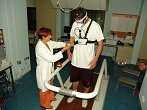





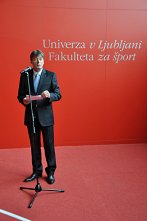
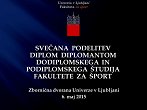
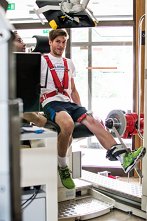

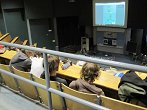






.png)